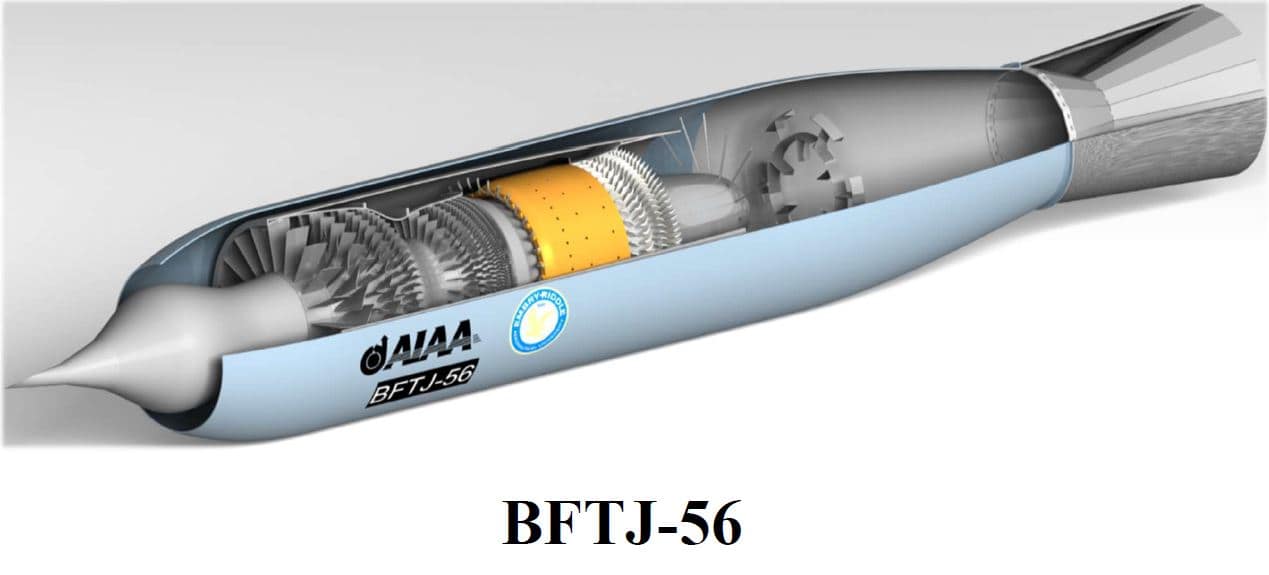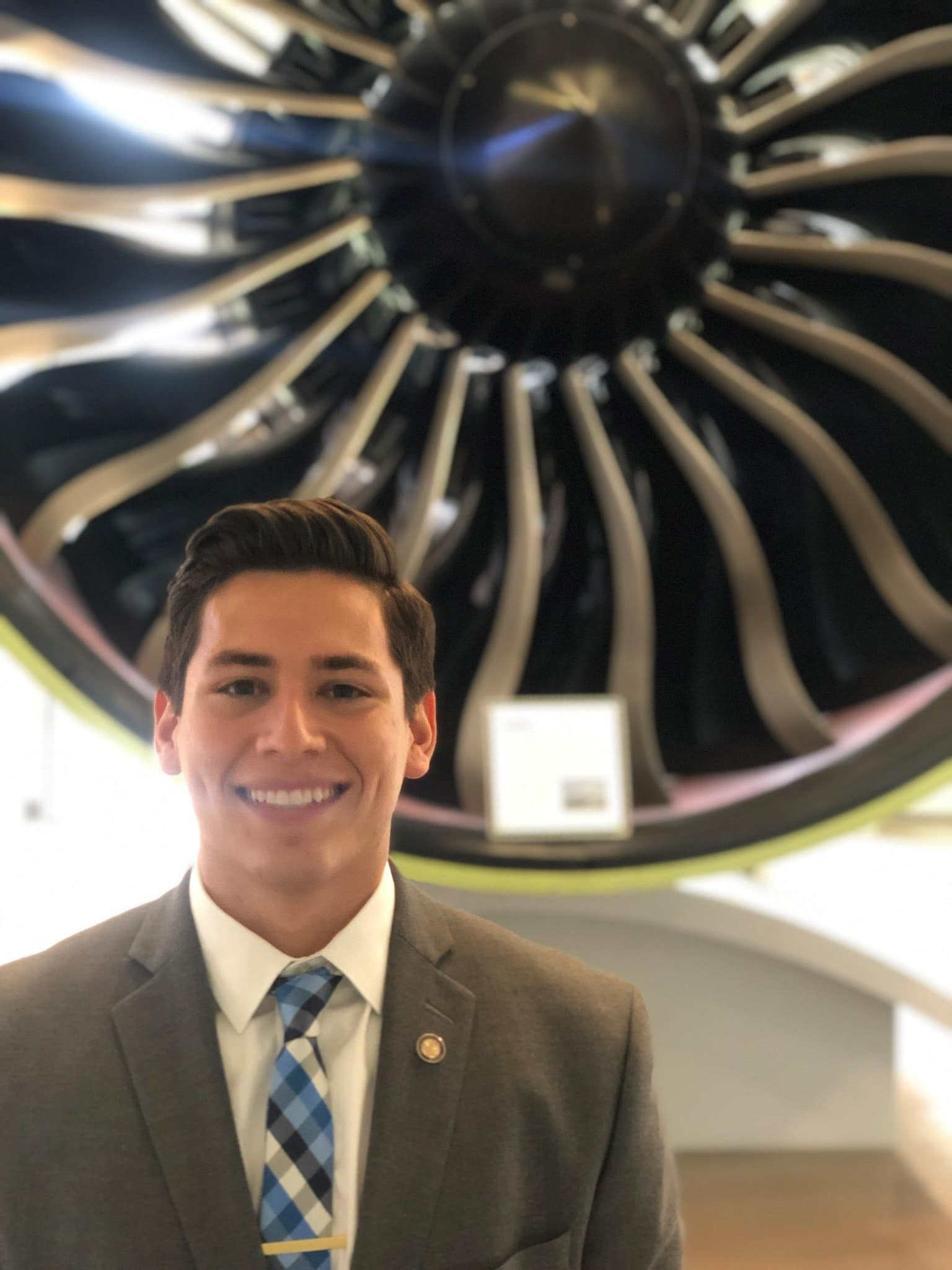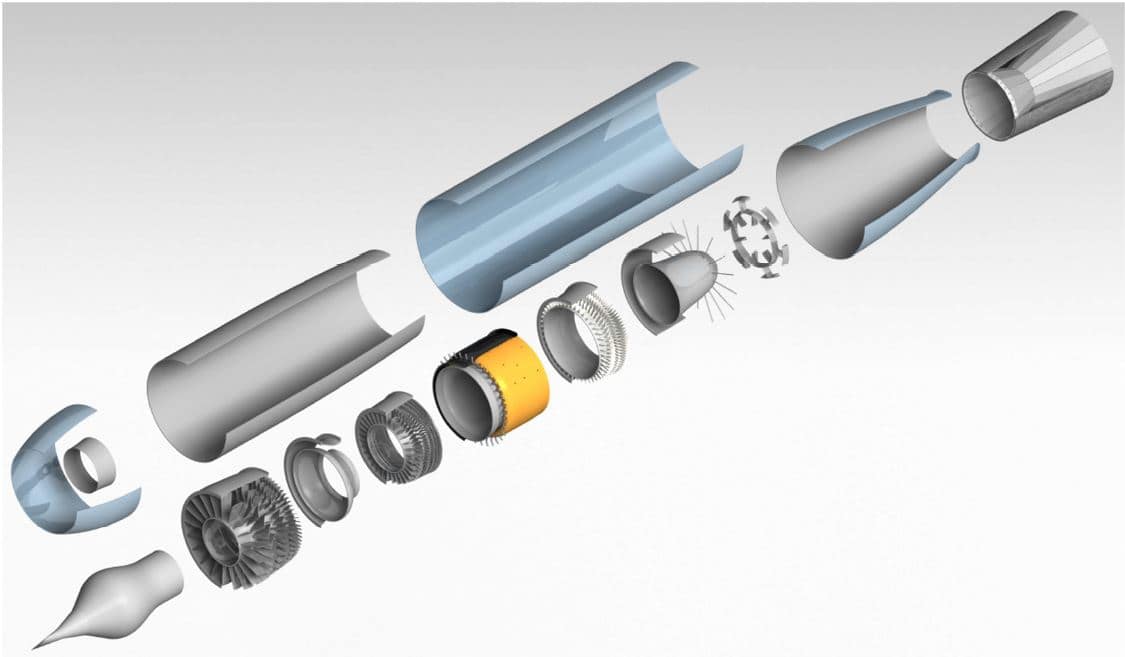Students' Jet Engine Designed to Fly 3 Times the Speed of Sound

Aerospace Engineering students recently designed a supersonic business jet engine that has the capability of producing maximum flight speeds of Mach 3 — three times the speed of sound.
Similar to the engine in the Lockheed SR-71 Blackbird — known as the world’s fastest non-rocket powered aircraft — students adjusted the engine’s geometry to ensure their design functions like a ramjet. The engine design achieved fuel efficiency at both subsonic speeds (similar to conventional aircraft) as well as supersonic speeds (like a fighter jet).
An exploded view of the jet engine design shows the major components designed by Aerospace Engineering students who participated in the AIAA Gas Turbine (Engine) Design Competition.
The novel design earned the four undergraduate student engineers second place from the American Institute of Aeronautics and Astronautics (AIAA) Gas Turbine (Engine) Design Competition. The students, who are enrolled in the Aerospace Engineering propulsion track, include Bruno Aranda, Jorge Clares, Jesus Ferrand and Scott Michael.
 Aerospace Engineering Student Bruno Aranda, Embry-Riddle team lead for the American Institute of Aeronautics and Astronautics (AIAA) Gas Turbine (Engine) Design Competition
Aerospace Engineering Student Bruno Aranda, Embry-Riddle team lead for the American Institute of Aeronautics and Astronautics (AIAA) Gas Turbine (Engine) Design Competition
Aranda, the team lead, said the competition offered the group a unique experience that pushed them beyond conventional classroom lessons. “It gave us opportunities to network with industry and academic leaders as well as learn from other university competitors around the world.”
Students were required to respond to AIAA’s Request for Proposal — a common practice used by businesses and organizations to announce project requirements to help solicit proposals, or bids, for a service or asset. The AIAA requires students determine a hypothetical solution, test the hypothesis, evaluating its effectiveness and prepare a report that is reviewed by experts in the field.
Associate Professor Dr. Mark Ricklick said it’s important for students to gain experience addressing real-world design problems and learn business processes. “It is a great resume builder.”
The experience included overcoming hurdles typical of professional work environments, Aranda said. “We learned how to be flexible when the customer demands changed, which is something common that happens in the real world.”
Much like the rest of the world’s office workers, students found themselves contending with the university’s temporary pivot to online classes in March 2020. Teammates were suddenly split up and living in the U.S., Mexico and Pakistan.
It wasn’t long before they hit their stride, though, and made the best of their online collaboration.
“There is no doubt that COVID-19 played a big part on how we completed this design,” Aranda said. “Trust and time management was the key to our success.”

 Kelly Pratt
Kelly Pratt